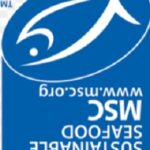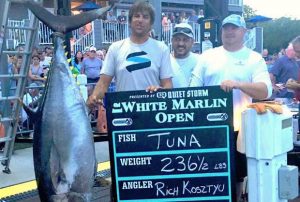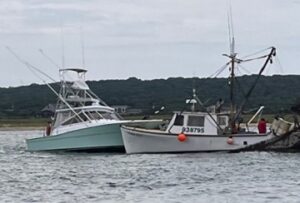Updates to Lobster Industry from Commissioner Keliher
As has been the case over the past several years, there is no shortage of issues facing the lobster industry. I am keenly aware what all the uncertainty around right whales does to both the people and businesses in this industry, and I am afraid that an end to that uncertainty does not seem to be in sight. However, major changes could be identified soon, depending on what a federal judge decides this fall.
In addition to right whales, there have been continued discussions at ASMFC about whether there are further management changes needed to protect the resiliency of the lobster stock.
Finally, the market challenges and resulting price impacts this summer have generated a lot of calls and questions to my office about what DMR can do to improve this situation.
I wanted to provide updates on all these topics, to keep you as informed as possible as these situations evolve.
Right Whales
There have been several developments in the lawsuit between the environmental groups and NOAA Fisheries (usually referred to as CBD v. Ross, or the CBD case). As a reminder, ME DMR along with the MLA and MLU are intervenors in this case.
On July 8th, Judge Boasberg ruled that the 2021 Biological Opinion (Bi-Op) and final whale rule were invalid but fortunately has allowed the lobster fishery to continue while the remedy phase is completed. This ruling will result in the implementation of additional risk reduction on a much shorter timeline than the ten-year timeline that the Bi-Op had initially outlined. For the 2021 Bi-Op, the Judge stated that NOAA erred in issuing the incidental take statement (ITS) that authorized zero take of right whales, because the Bi-Op anticipates greater than zero takes to occur. Further, Judge Boasberg stated the ITS does not comply with the negligible impact requirement under the Marine Mammal Protection Act. This negligible impact requirement is where the Endangered Species Act and the Marine Mammal Protection Act intersect, and it requires a commercial fishery to meet a negligible impact determination on a protected species (i.e. right whales) in order to issue an ITS. For context, a negligible impact determination is a lower number than the Potential Biological Removal (PBR), meaning it is a higher bar to achieve. This is why we are putting so much focus on the MLA lawsuit, as this is where we can argue about the science, and the fact that NOAA has cherry picked the information being used.
Finally, with regard to the 2021 final whale rule which you all worked to implement this May, the Judge determined that here NOAA also erred, because the final rule did not reduce takes to below PBR within 6 months of implementation. In other words, the Judge has indicated that the 2021 whale rule did not go far enough, or move fast enough, to protect right whales.
So what does this all mean? As I have said previously, a Bi-Op that includes an ITS is needed to permit the federal lobster fishery. This ruling from the judge means that the federal lobster fishery needs to achieve a negligible impact determination to get an ITS. This is a very tall order as PBR is now 0.7 for right whales and a negligible impact determination will be even lower than that. As a result, this likely means that significant additional regulations are coming on a quicker timeframe than was originally outlined.
The Court is now focused on the “remedy” portion of the case, in which the Judge determines what must happen in the interim as NOAA works to prepare a new Bi-Op. The parties are now preparing to submit briefs on remedy. In the very worst-case scenario, the Judge could vacate the 2021 Bi-Op which would mean that NOAA would not be able to authorize the federal fishery to operate until a new Bi-Op is in place. As intervenors in the case, we will strongly advocate for the fishery to remain open but I have always promised to be honest about the situation we are in, and that is a possible outcome.
Many fishermen have asked me why we aren’t appealing, but at this stage of the litigation, there is not a final decision to appeal. I do want the industry to be aware that Governor Mills has made the strong legal defense of this industry one of her highest priorities, and provided $3 million in the state budget to ensure that we have adequate resources to pursue whatever legal strategies may be necessary. Because of that, we are able to consider all legal options, but we need to do so at the appropriate time and with all the information in hand.
From this point forward, the various parties will be submitting briefs regarding remedy in the CBD case, with final reply briefs due October 17. On Friday, the environmental groups submitted their brief, and not surprisingly, they have once again asked the judge to throw out the new Bi-Op and set an aggressive schedule that puts new fishing rules in place six months after the judge’s final ruling. This means that these national ENGO’s have asked the judge to require a full 90% reduction in risk several years ahead of what the current Bi-Op calls for. We expect the court to rule on remedy sometime in November. There is potential for the Judge to reach a decision in the MLA case ahead of that time if he does not stay, or put that case on hold, while he decides this case. As we learn more, we will send additional information out to industry.
As you know, there is also another lawsuit currently in progress that relates to the case above, and that is the one that the MLA filed against NOAA arguing that NOAA made faulty assumptions which overstated the risk of the lobster fishery to right whales. ME DMR is also an intervenor in this case, which is before the same judge. It is not yet clear if or when Judge Boasberg will rule on MLA’s case. Last week, ME DMR, along with the MLU, MLA, and NOAA all submitted briefs highlighting the need for the Judge to rule on the MLA case ahead of determining remedy in the other lawsuit. ME DMR sees this as critical because, if NOAA made faulty assumptions in the 2021 Bi-Op, those too must be corrected as NOAA works on a new Bi-Op. These assumptions impact the magnitude of action the lobster fishery needs to take to reach PBR and the negligible impact determination. To be clear, even if the MLA is successful in this case, we expect that substantial additional measures will still be necessary to protect right whales; the goal is to reduce the magnitude of any additional measures that will be required.
I realize this is an extremely uncertain time for the Maine lobster industry. This uncertainty is emotionally taxing on top of other stressors on the industry and the physical work you perform each day. ME DMR and our attorneys are working cooperatively with industry attorneys to navigate the lobster fishery through these uncharted waters and continue to advocate on your behalf in the courts.
ASMFC Resiliency Addendum Delayed
This past spring, the Department held a round of Zone Council meetings to provide industry members with the scientific information that was informing discussions at ASMFC about the “resiliency” addendum, which is aimed at strengthening the lobster stock to try to maintain current levels of landings. We discussed potential management measures to achieve that objective, including changes to the minimum size. At the time of those meetings, we anticipated that we would hold more meetings in advance of ASMFC action, for me to hear directly from industry members to inform Maine’s position on this proposal.
In addition to the Zone Councils, I also talked to Maine lobster dealers and processors about this proposal, to understand how such changes could affect their individual business plans. I was concerned that federal law currently prohibits the importation of lobsters that are under the lowest minimum size in the U.S. If the current minimum size were to be raised, the US would be above Canada, and it would be illegal to import Canadian lobsters below Maine’s minimum size. I heard clearly from the dealers that this would be catastrophic for their businesses, given their reliance on Canadian product at certain times of year. In light of this information, as well as the situation with whales described above, this discussion was tabled at the most recent ASMFC meeting and will be discussed again at the November meeting. While we wait for more information on how this will get resolved, we are holding off further Zone Council conversation on this topic until we know whether it will be necessary.
Lobster Price and the State’s Role
Finally, we have gotten a number of calls since the beginning of July, wondering whether the Department knows about the lack of market this summer, and the impacts that has had on price and fishing activity. I can assure you I’ve been tracking this situation because I am very concerned about the impacts to the lobster industry, as well as the impact on other fisheries the Department manages (e.g. menhaden). However, as I’ve explained in past years when supply and demand upended our expectations for the season (e.g. 2008, 2012), the Department’s authority is limited to actions to manage the lobster resource, and we have no authority to address disruptions in lobster markets. I can’t prevent people from fishing for reasons that aren’t related to resource management. As with past seasons, we can only get through these types of situations with good communication between harvesters and dealers to try to make sure we are not landing weak product with no place to go. I know this is frustrating on top of all the other challenges this year, but we have been in similar situations before and gotten through it.
I know that this is a lot of information, at what is often a busy time of year. I provide this in the spirit I have always approached this industry – to honestly share with you whatever information I have, give you my thoughts on where things are headed, and let you know what we are doing as a result. If you have questions that haven’t been answered here, please feel free as always to reach out to my office, and we will do our best to help.
Sincerely,
Pat


















































